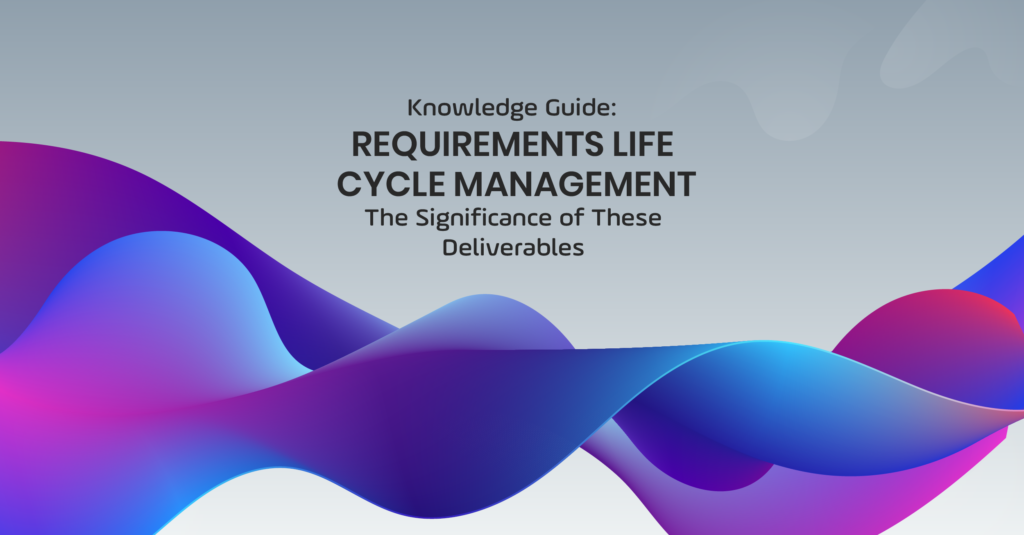
Requirements life cycle management is a body of knowledge that covers the activities a business analyst does to handle and maintain requirements from initial conception to final execution.
Normally, the life cycle management process entails keeping track of, planning, analyzing, controlling, and conveying organizational needs. Consequently, managing the requirements life cycle can significantly impact the end result of the project.
Moreover, to manage the requirements life cycle, a business analyst needs to handle and uphold the requirements while determining how they relate to designs, evaluating changes, and convincing people to accept changes being made.
This blog has the knowledge and tools for seasoned project managers and business analysts to navigate the intricate world of requirements life cycle management.
5 Tasks Involved in Requirements Life Cycle Management
The area of knowledge a business analyst must execute the following five duties as part of requirement life cycle management: trace requirements, maintain requirements, focus on requirements, evaluate requirements modifications, and approve requirements.
Trace Requirements
Analysis and upkeep of connections between requirements, designs, and solutions are required for tracing requirements, and these links should serve as the foundation for impact analysis, allocation, and coverage. Every requirements life cycle task needs to be recognized and documented in a way that allows for backward and forward traceability. To learn more about this, you can read our blog on traceability matrix.
Additionally, this step from requirements lifecycle management aids in identifying weaknesses and inconsistencies in requirements and helps to justify the change. The analyst can determine at any time whether or not a set of requirements has been met.
The business analyst may control the scope, timeframe, risks, and prospective costs through traceability and make sure the solution is in line with the requirement.
Maintain Requirements
The accuracy and timeliness of the requirements and designs must be maintained throughout the requirements lifecycle management process. They can also be reused if necessary.
Maintaining requirements is essential for keeping them valid throughout the process. Particularly this becomes more important when they serve a specific organizational need. In the business analysis, the requirements are consistently expressed, approved, and evaluated using standardized methods. Also, they should be accessible and understandable to maximize the benefits of maintaining requirements. When done right, this can speed up the process of requirements lifecycle management.
Prioritize Requirements
With this task in the requirements life cycle, the most integral requirements are taken care of first. And to be accurate in the cycle, a requirements prioritization matrix can be used for this.
In essence, requirement prioritization is used to choose which potential requirements should be included in a specific product release. Given the diversity of stakeholders, each has a unique set of priorities for the intended product.
Because certain stakeholders are in a stronger position than others, their decisions are more significant and weighted. Therefore, you can’t make every demand a priority. Some can fall into the lowest category, while others can be highly prioritized.
That means choosing which requirements are higher on the priority list and which ones are lower depends on the entire process. Importantly, the criteria that are low on the list of priorities are not disregarded. They have a role to serve in the final product. So, in this task from life cycle management, the order in which the requirements are carried out only matters.
Assess Requirements Change
It is essential to evaluate changes in requirements lifecycle management and figure out whether or not they are acceptable because requirements will unavoidably change over time. To perform this, you can use the requirements change control process.
Every business analyst is aware that managing change is an ongoing aspect of any project. This phase’s goal is to assess the requirements in light of the upcoming modifications. One of these key components is determining the level of formality needed for each endeavor in light of the project’s type and potential influencing circumstances.
Requirements can be classified as functional or non-functional, and each of these types of requirements has different characteristics that an analyst has to consider when assessing a change.
Documentation of the impact that the change carries forward is included in requirements lifecycle management.
Approve Requirements
This is the last task of the life cycle management. After evaluating the adjustments to your requirements, you must ensure that they are accepted before putting them into practice. Usually, a requirements committee or other decision-making body handles this.
The official procedure for approving requirements is known as the Requirements Approval Process. However, it should be customized to the particular project and organization. This part of the life cycle management process allows everyone to understand the criteria and what must be provided. There are several basic components included in the requirements approval process.
When you complete this activity, you get agreements and approvals on needs and designs. You must understand the stakeholders’ responsibilities and levels of authority to do this task effectively. You will achieve agreement on approvals and resolve any disputes that may occur as a consequence of stakeholder differences. Finally, you will inform the other stakeholders who were not involved in the approval process of the approvals.
The summary of this step is as follows:
- A document of the specifications that need to be accepted.
- The requirements will be evaluated using the criteria.
- The procedure for approving the specifications (such as getting everyone’s signature).
The project can begin once the prerequisites all the stakeholders accept the change. Once that happens, the project is ready for implementation.
In Conclusion
For anyone who wants to ensure a project’s success, a life cycle management process is quite fruitful. To make the process simple for you, Pearls has developed the best requirement management tool. No matter what your needs are on an organizational level, it will work seamlessly to guarantee great results. Visit Pearls to get more information regarding the tool.





Pingback: Requirements Life Cycle Management Process Expl...